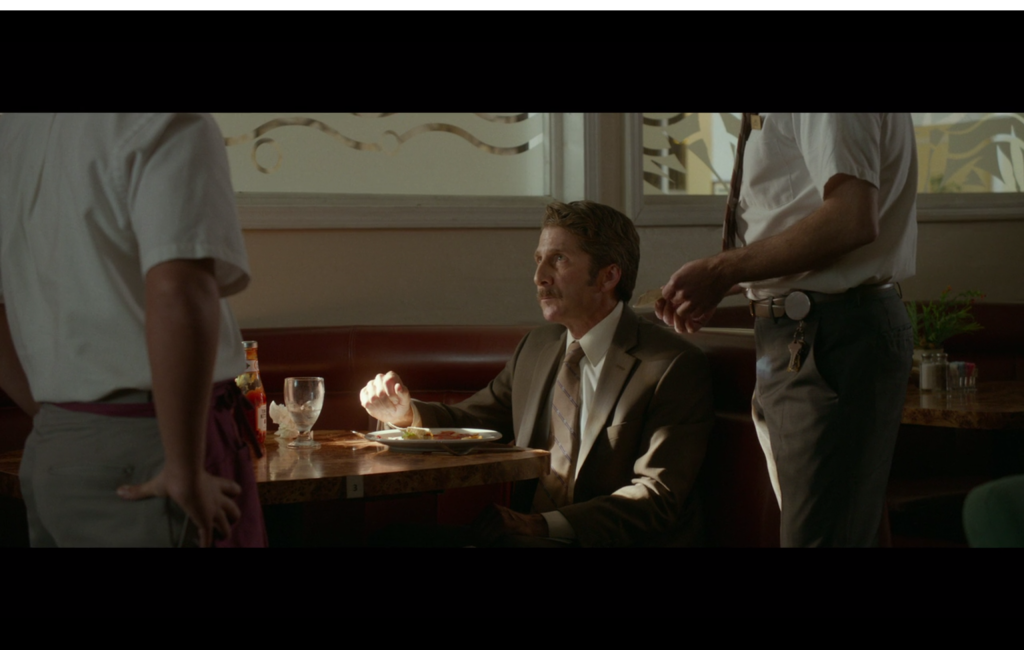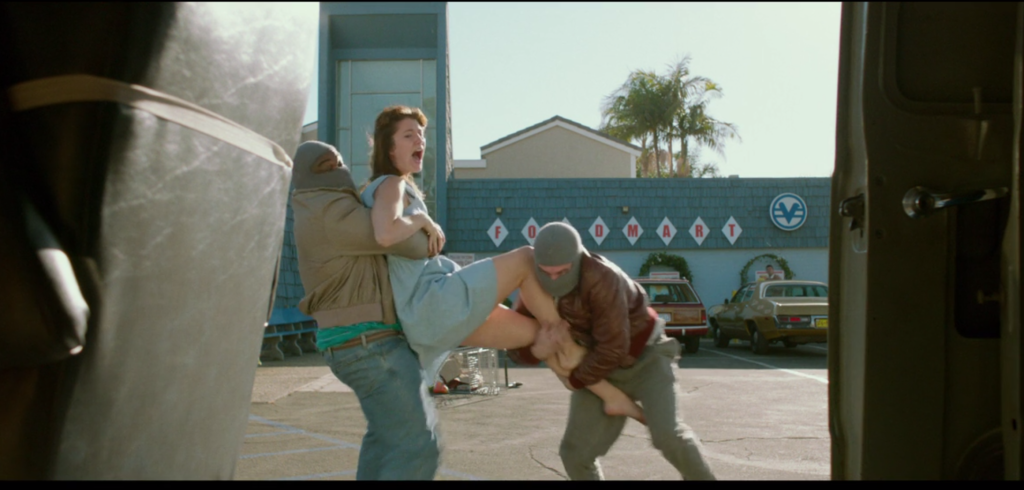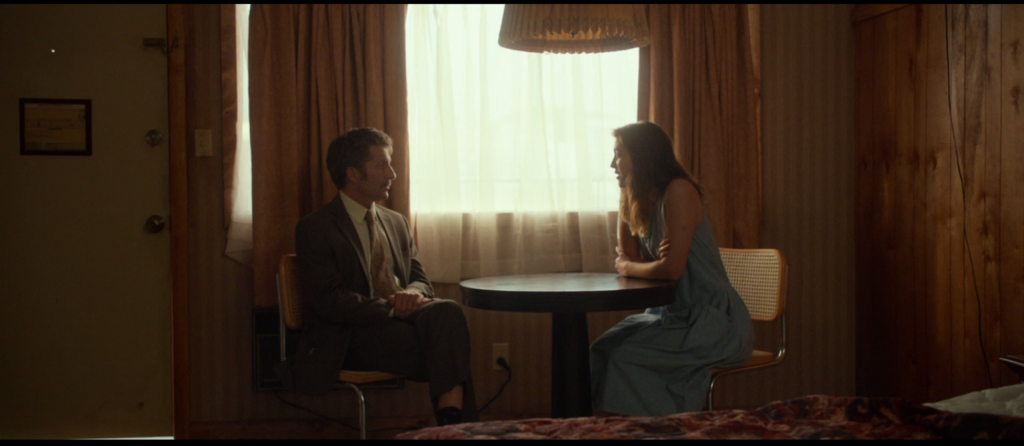The best way to approach a film like Faults is to go into it with as little knowledge as possible, so I will do my best to keep this free of crucial plot points. But what is especially interesting about writer/director Riley Stearns’ debut feature is not so much what happens in the film, but how the film manages to blend genres into a story ultimately about subjectivity.
At risk of sounding trite, the notion of subjective reality is ingrained in the plot of the film. Ansel Roth, (Leland Orser) our main protagonist — an amalgamation of Marc Maron and Bill Murray’s St. Vincent character — is a self-proclaimed expert in mind control and cult deprogramming. His profession is built around conditioning people back to reality. He takes people who are under the mind control of a cult, abducts them and attempts to socialize them back to “reality.” Throughout the film, faults in binary oppositions are called out as Roth’s character plays a liberator who abducts (or rescues) Clair (Mary Elizabeth Winstead) from the secret Faults cult and traps her in a motel room to deprogram her. Furthermore, multiple characters, including Roth, will ask if their morally questionable activity is legal, and when it is deemed so by the law, they proceed.
Binary oppositions of controlled/controller, good/evil, right/wrong, legal/illegal are left vague, as depicted in the first few scenes. As the ‘70s cult frenzy died down, so too did Roth’s business, leaving him economically and emotionally strained. In what may be the most understatedly funny opening scene in recent memory, Roth, shot from a medium angle, is wearing a suit and eating alone in a motel diner. After trying to use an expired coupon to pay for the meal, a security guard asks Roth how much money he has. The camera stays still, framing Roth between law and order. He bluntly says “Nothing. I have nothing.” It’s an excellent moment, and Orser plays it with such a quiet sadness, revealing the first of many characters who seem to be disenfranchised and defeated by life.
Ironically, moments later Roth is lecturing in a sparsely attended motel conference room about free will and choice. Roth is playing the part of the American entrepreneur simultaneously while his character is already defeated by the economy, and of changing cultural landscapes that left his work dated and no longer relevant.
Although Roth is preaching about free will as a means of economic survival, one of the attendees of his confronts him during the lecture. Their faces are shot in profile against white blinds, Roth on the right in black and the other man on the right in colorful plaid. Roth’s accuser digs into the past and scorns Roth for being responsible for his daughter’s suicide, saying Roth was “gang raping her mind.” The idea that Roth is selling himself as a white knight while also being accused of brainwashing the man’s family is the first of many examples of the film depicting a fault in binary oppositions. Is Roth a deprogrammer or a kidnapper? The film likes to leave the answers to these questions vague, again highlighting the theme of subjectivity and a multitude of interpretations that may lie outside the binary.
After the conference, two worried parents plea to Roth that he deprogram their daughter Claire, and due to his economic precarity, Roth finally obliges, but not before the parents double check that deprogramming is actually legal. Legal as it may be, Roth and two nameless henchmen track down Faults, violently shove Claire in a van, one slaps her and they pull into a motel. To depict another example of signs in society pointing toward a socialized idea of morality and legality, one of Roth’s henchmen ask if it is legal to back the van into the parking spot. Once they confirm that a sign says they can back into the spot, Roth and company proceed on their deprogramming mission.
From here on out, the film becomes increasingly surreal and suspenseful. Winstead, in her best role to date, plays Claire both doe eyed and mysterious. The audience, and Roth, are not privy to her motivations, which make the twist at the end feel all the more shocking, and adds dimensions of suspense and mystery into every intimate interaction between Roth and Claire when the two are trapped in the motel room. The lack of clear cut motivation not only calls into question who exactly is being controlled, but builds perfectly to a twist ending that doesn’t feel forced but instead highlights the thematic content of the entire film. The vague character motivations again highlight an idea of subjectivity, leaving room for interpretation and understanding of a socialized idea of reality that lie outside clear binary oppositions.
A side plot involving Roth owing money to his manager after his second book sold so poorly, and dodging constant threats, serves two main purposes; to further characterize Roth as a helpless, emasculated individual hanging by a string to survive, and to set up Roth leaving Claire alone in the motel over night. Roth does return to find Claire still sitting in the motel staring at television static, which, on second viewing, is explained by the ending.
Most the final acts of the film occur in a confined motel room, borrowing a trope of Hitchcock’s experimental single set film Rope. The physical setting of the story not only invokes a sense of psychological claustrophobia and mania, but also render a world in drab browns and greys, portraying a psychological and physical head space of disillusionment and creative malaise. This colorless environment of television static, dated motel furniture and economic hardship further lend itself to a world where the socialized signs of morality and legality contribute to the erosion of clear, understandable binary oppositions.
Faults is a fascinating exploration of subjectivity told through characters escaping and re-entering alternating realities; Claire who was presumably mind controlled by a cult, being forcibly removed from the cult and socialized back into a normalized, banal world, and Roth, disenfranchised by reality based on his economic depression, being influenced by Claire during their deprogramming session. Characters who are controlled may seem to have more free will then they let on, and those that seem in control may not have the agency they so deeply desire. As the film was initially in limited release, Faults possesses many of the qualities to become a cult classic years down the road, rewarding multiple viewings and readings. The film is streaming now on Netflix with an 89 minute runtime.




